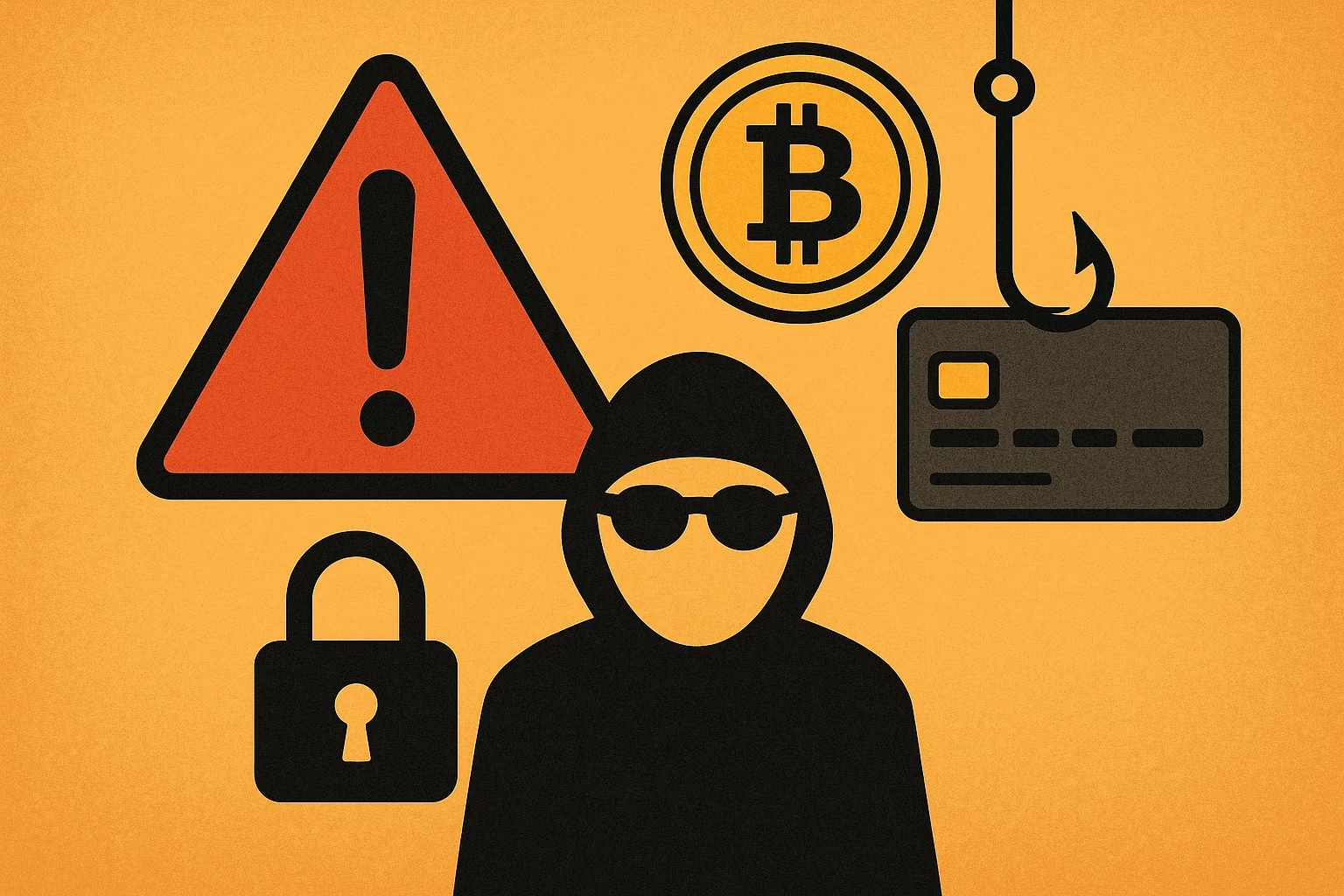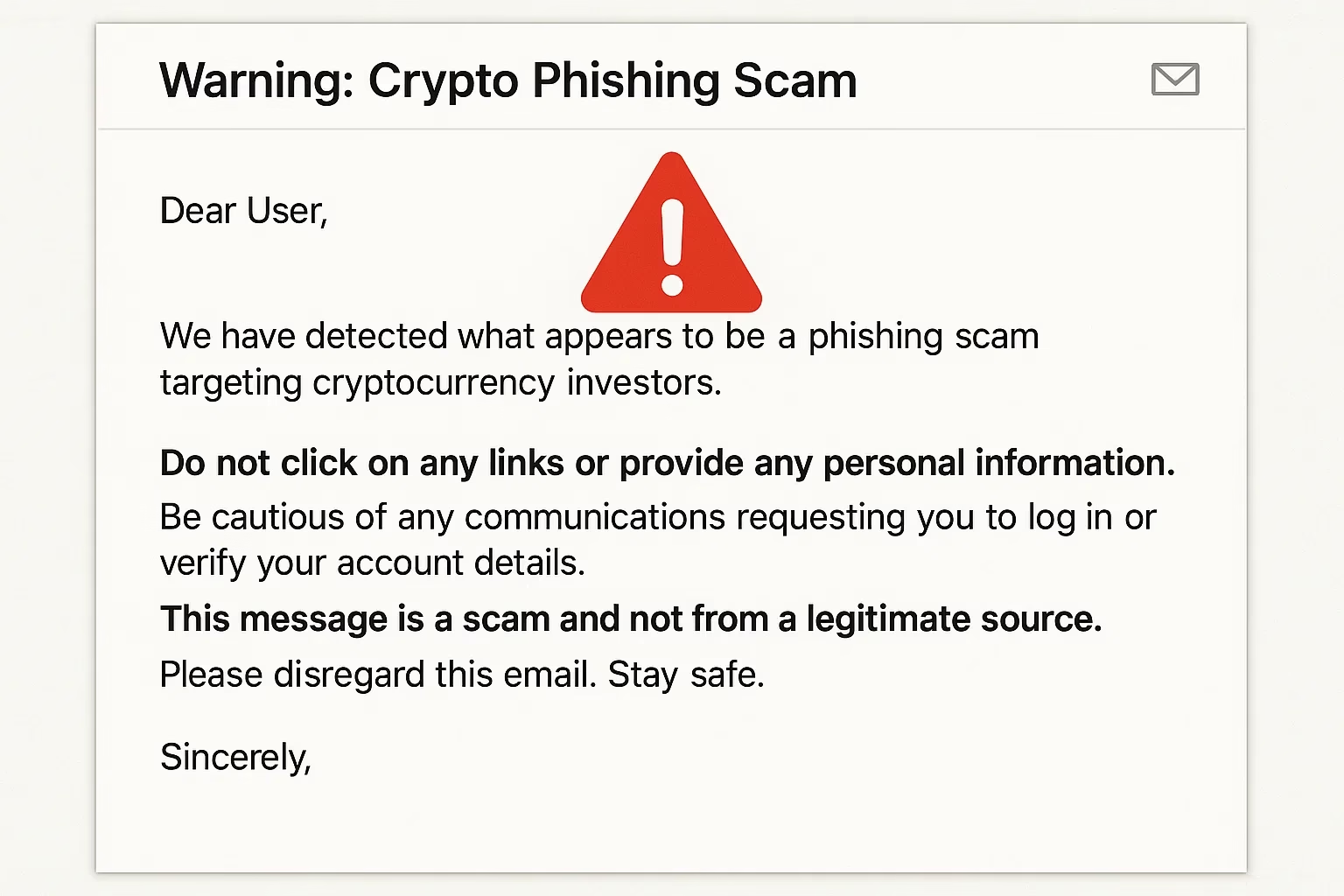
As cryptocurrency adoption grows in 2025, so do the risks of falling victim to crypto scams. From phishing attacks to fake giveaways, scammers are using more sophisticated methods to exploit users. In this guide, we’ll explore five common crypto scams and show you how to avoid cryptocurrency fraud to keep your digital assets safe.
Also read: Not Just Trading! 5 Proven Ways to Earn Passive Income with Crypto in 2025
1. Phishing Scams
Phishing remains one of the most prevalent threats in the crypto world. Scammers often send fake emails or create counterfeit websites that mimic real crypto exchanges or wallet providers. The goal is to trick users into revealing their private keys or login credentials.
How to avoid it: Always verify the website URL, enable two-factor authentication, and never click on suspicious email links.

2. Fake Crypto Giveaways
This popular scam often involves fake social media accounts pretending to be influencers or crypto companies. They promise to multiply any cryptocurrency sent to them—this is always a fraudulent crypto scheme.
How to avoid it: Never send crypto expecting more in return. Always verify giveaway legitimacy on official company sites.
3. Rug Pulls in DeFi Projects
Rug pulls occur when developers create a seemingly legitimate DeFi or token project, attract investors, and then vanish with the funds. Many fake projects use buzzwords and inflated promises to lure victims.
How to avoid it: Research project teams, audit reports, liquidity locks, and community reviews before investing in any new crypto project.
4. Pump and Dump Schemes
In these scams, a group hypes up a low-cap token to inflate its price (pump), then sells off en masse (dump), leaving other investors with losses.
How to avoid it: Be wary of tokens suddenly trending online or in Telegram groups. Avoid chasing hype without fundamentals.
5. Malicious Wallet Apps
Fake wallet apps can be found even in official app stores. These apps may look legitimate but are designed to steal your seed phrase or private keys upon setup.
How to avoid it: Download wallets only from verified sources or links on official websites. Use hardware wallets for higher-value assets.
Additional Tips to Stay Safe in Crypto
- Enable 2FA on all crypto accounts.
- Never share your seed phrase or private keys.
- Use a hardware wallet for large holdings.
- Stay informed with trusted crypto news sources.
- Double-check all URLs and sources before interacting.
Also read: Crypto Wallets Explained: Custodial vs Non-Custodial
Frequently Asked Questions (FAQs)
What are the most common crypto scams?
Common crypto scams include phishing attacks, fake giveaways, rug pulls, pump-and-dump schemes, and malicious wallet apps.
How do I know if a crypto project is a scam?
Research the team, check for audits, review the community feedback, and avoid projects that promise guaranteed high returns or hide critical details.
Can I recover funds lost in a crypto scam?
In most cases, it’s very difficult to recover lost crypto. That’s why prevention and strong security practices are essential.
What is the safest way to store my crypto?
A hardware wallet is the safest method, especially for long-term or high-value holdings.
Are crypto giveaways real?
Legitimate giveaways are rare and usually run by reputable exchanges. Always verify on official websites and never send crypto expecting more in return.
Conclusion
As crypto adoption grows, so does the risk of fraud. Understanding how to avoid common crypto scams is crucial for protecting your assets and identity. Stay cautious, do your research, and always prioritize security in every crypto transaction.
Want to learn more? Visit our guide on different types of crypto wallets.




